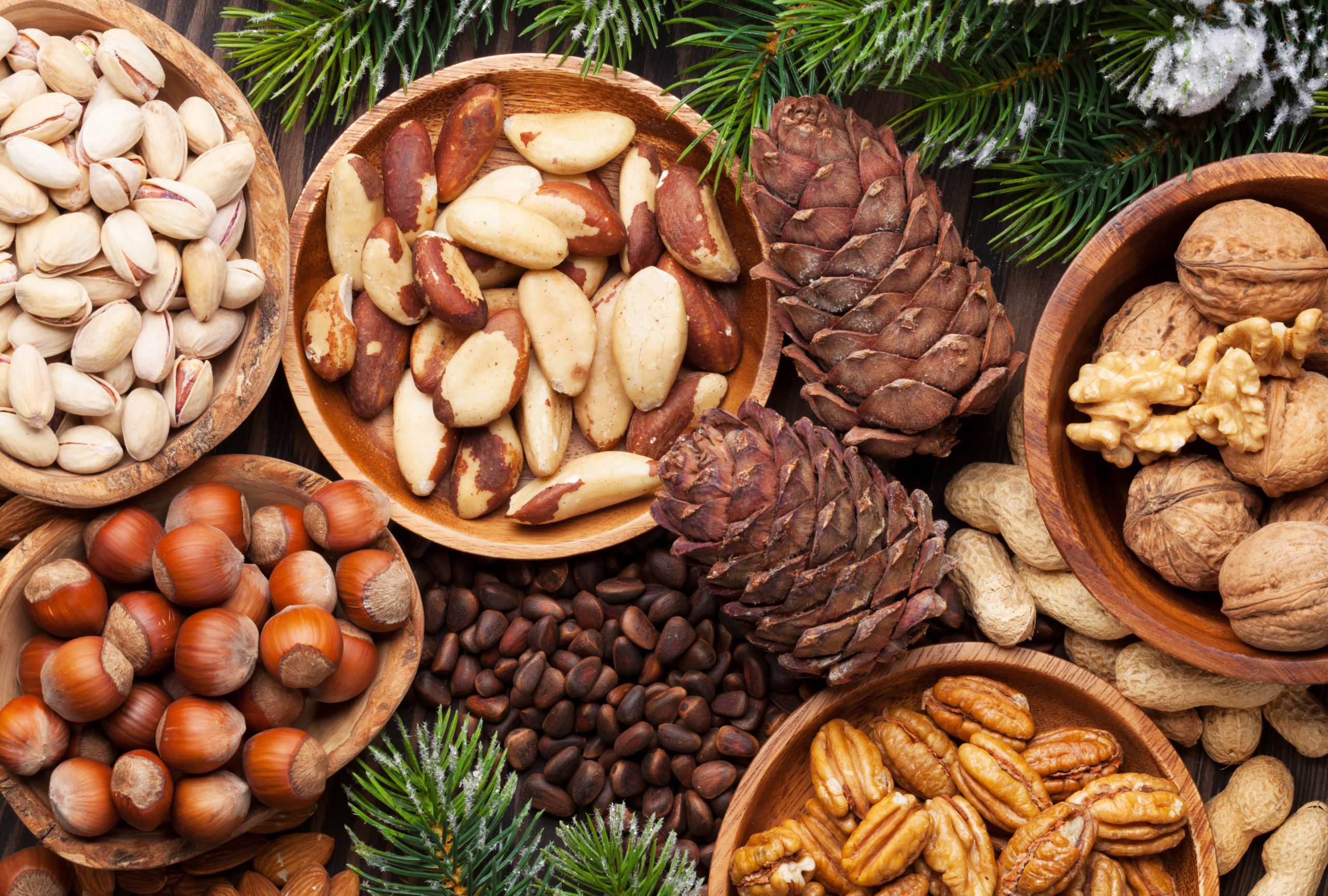These heart-healthy superfoods were trendy in 2016 for good reason.
The annual “What’s Trending in Nutrition” survey asked more than 500 registered dietitians about hot topics in nutrition. One of the top trends in 2016: more nuts and seeds in our diets.
Many consider nuts and seeds to be one of the new “superfoods,” overtaking kale and coconut, which remain strong contenders.
Nuts and seeds are packed with nutrients, contain heart-healthy unsaturated fats that can help lower cholesterol and are one of the best sources of omega-3 fatty acids, which also protect against heart disease.
Studies show that nuts can help us eat less, too, thanks to fiber and protein that make us feel fuller and satisfied longer. They truly are super foods!
There are many nuts and seeds to choose from, each offering a distinct flavor.
Pepitas, pumpkin seeds, are gaining popularity. They give salads a crunchy bite. Marcona almonds are another option that are more unusual than run-of-the mill almonds. So think beyond almonds or peanuts and get creative by trying variety in your favorite recipes.
Although nuts and seeds are an ideal nutrient-rich meal or snack addition, they are also high in calories, so keep an eye on portion size. A serving size is 1 ounce, which is approximately a handful, depending on the type of nut. The following equal 1 ounce: 24 almonds, 18 medium cashews, 12 hazelnuts or filberts, 8 medium Brazil nuts, 12 macadamia nuts, 35 peanuts, 15 pecan halves and 14 English walnut halves.
Prepackaging nuts into small, single-serving containers or bags can help keep the serving sizes under control. Be sure to check the nutrition label on the food’s packaging for the serving size. To avoid weight gain, substitute added nuts for food sources high in fat, specifically saturated fat. For example, top a green salad with nuts instead of bacon bits and croutons.
Store nuts in a sealed container in the refrigerator. The oils in nuts can turn rancid if they sit on the shelf too long. When it comes to seeds, grind flax, chia or hemp seeds for optimal digestion. If you have a small coffee grinder, that will work great.
Easy ways to add nuts and seeds to meals:
- Toast almond slivers and sprinkle on salads.
- Sprinkle sesame seeds on a stir-fry.
- Add walnuts or sunflower seeds to hot oatmeal or cold cereal.
- Grind almonds into a powder for added protein in baked goods or smoothies.
- Use flax seed or walnut oil for making salad dressings.
- Grind cashews or almonds and use as a crunchy breading for chicken or fish.
On-the-go nutty snacks:
- Make a trail mix with cashews, pepitas, dried fruit, pretzels and dark chocolate chips.
- Spread nut butters on whole-grain bread, sliced apples or pretzels.
- Top Greek yogurt with pecans and fresh fruit.
- Make your own granola.
Stacey Kendrick, MS, is a health educator with more than 20 years of experience in wellness and population health. She spent much of her career at Vanderbilt’s Faculty/Staff Wellness Program and currently works in Strategic Marketing at Vanderbilt. She is mother to two adult daughters. In her free time, she teaches healthy cooking classes, runs, gardens and enjoys backyard bonfires.

